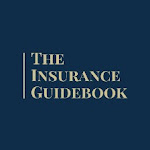In a world where uncertainties abound, insurance has become an essential aspect of financial planning. While many individuals and businesses can secure standard insurance coverage for common risks, some face a unique challenge—being labeled as "uninsurable" due to their high-risk nature. However, there's a solution that caters specifically to such cases—High-Risk Insurance. In this article, we will delve into the concept of high-risk insurance, its significance, and the financial benefits it offers.
Table of Contents
Understanding High-Risk Insurance
Identifying High-Risk Individuals and Businesses
The Importance of High-Risk Insurance
Types of High-Risk Insurance Coverage
4.1 Health-related High-Risk Insurance
4.2 High-Risk Auto Insurance
4.3 High-Risk Business Liability Insurance
4.4 High-Risk Property Insurance
The Financial Implications of Going Uninsured
Mitigating Risk Factors to Lower Premiums
6.1 Improving Health and Lifestyle Factors
6.2 Enhancing Driving Record
6.3 Implementing Safety Measures in Businesses
How High-Risk Insurance Works
Benefits of High-Risk Insurance
8.1 Financial Security in Unforeseen Circumstances
8.2 Peace of Mind and Reduced Stress
8.3 Opportunity for High-Risk Ventures
The Role of Insurance Premiums
Case Studies: Success Stories with High-Risk Insurance
How to Obtain High-Risk Insurance
Frequently Asked Questions (FAQs)
Understanding High-Risk Insurance
High-risk insurance, also known as specialty insurance, is a type of coverage designed for individuals and businesses with a higher likelihood of facing specific risks or events that are not covered by standard insurance policies.
Identifying High-Risk Individuals and Businesses
Certain factors categorize individuals and businesses as high-risk entities. These may include a history of frequent insurance claims, poor health conditions, risky driving behaviors, or operating in industries prone to accidents.
The Importance of High-Risk Insurance
High-risk insurance plays a crucial role in providing protection to those who might otherwise be left vulnerable. It ensures that even those facing unique risks can access coverage tailored to their needs.
Types of High-Risk Insurance Coverage
Health-related High-Risk Insurance
Individuals with pre-existing medical conditions often struggle to secure standard health insurance. High-risk health insurance bridges this gap, offering coverage despite existing health issues.
High-Risk Auto Insurance
Drivers with a history of accidents or traffic violations can find it difficult to get affordable auto insurance. High-risk auto insurance offers them the necessary coverage at reasonable rates.
High-Risk Business Liability Insurance
Businesses operating in litigious industries or those with a history of legal claims require specialized liability coverage. High-risk business liability insurance safeguards them from financial losses.
High-Risk Property Insurance
Individuals with properties in disaster-prone areas or those with a history of property-related claims benefit from high-risk property insurance, which provides coverage against unforeseen events.
The Financial Implications of Going Uninsured
Opting to remain uninsured exposes individuals and businesses to substantial financial risks. A single unexpected event could lead to overwhelming expenses and potential bankruptcy.
Mitigating Risk Factors to Lower Premiums
Reducing risk factors can lead to lower premiums for high-risk insurance. Improving health habits, driving responsibly, and implementing safety measures can make coverage more affordable.
How High-Risk Insurance Works
High-risk insurance functions similarly to standard insurance. Policyholders pay premiums in exchange for coverage. In the event of a covered loss, the insurance company provides compensation.
Benefits of High-Risk Insurance
Financial Security in Unforeseen Circumstances
High-risk insurance offers a safety net, ensuring that policyholders are financially protected when facing challenges that are excluded from regular coverage.
Peace of Mind and Reduced Stress
Knowing that you are covered, even in high-risk situations, brings peace of mind and reduces stress. This allows individuals and businesses to focus on their goals without constant worry.
Opportunity for High-Risk Ventures
High-risk insurance enables entrepreneurs and businesses to take calculated risks, knowing that they have a safety net if things don't go as planned.
The Role of Insurance Premiums
Insurance premiums are the regular payments policyholders make to maintain their coverage. Premiums are influenced by risk factors and coverage limits.
Case Studies: Success Stories with High-Risk Insurance
Several individuals and businesses have benefited from high-risk insurance. These case studies highlight how proper coverage saved them from significant financial setbacks.
How to Obtain High-Risk Insurance
To obtain high-risk insurance, individuals and businesses should work with insurance brokers specializing in this type of coverage. They assess the client's risk profile and connect them with suitable insurers.
Conclusion
In conclusion, high-risk insurance serves as a lifeline for those deemed "uninsurable" due to their unique risk profiles. It offers financial security, peace of mind, and the chance to pursue ambitious ventures without fear of crippling losses. By understanding the nuances of high-risk insurance and its benefits, individuals and businesses can navigate uncertain waters with confidence. Remember, being labeled "high-risk" doesn't mean being left without protection—it means finding tailored solutions to safeguard your future.
Frequently Asked Questions (FAQs)
Q1: Can I switch from standard insurance to high-risk insurance?
Q2: Will my premiums decrease over time if I maintain a clean record?
Q3: Is high-risk insurance more expensive than regular insurance?
Q4: What if I can't find an insurer willing to provide coverage?
Q5: How often should I review my high-risk insurance coverage?
